2 hacks to foster your digital product culture
25 de October, 2021Let’s remove the product from the center?
8 de November, 2021I’ve talked a little about what is digital product management, the main characteristics of a product manager, and about some leadership and organizational culture tips for helping managers to lead without being “the boss”.
Now, let’s talk about the lifecycle of a software product and its different stages: innovation, growth, maturity and end of life.
Innovation
From all the lifecycle stages of a software product, innovation is the one that holds the biggest amount of doubts. It is also the topic that has the biggest number of books. Just go to Amazon and search for books on innovation and startup. On the next pages let’s explore the following questions.
- What is innovation?
- How to find a problem to be solved?
- How to find out if this problem is, in fact, an opportunity to be pursued?
- How to get payback with your software product?
Growth
In the growth stage, when the product has been developed and launched, we should worry about how to manage the product during its growth, that is, how to manage feedback? What is a roadmap? How to prioritize demands? What to do with special requests? How to say no? What metrics we should follow?
Maturity
After growth, comes maturity. In this phase, we will figure out when it happens and what to do if the product has survived this far.
End of life
After maturity, or when the product is developed but it does not work, comes the stage known as end of life of a software product. Let’s see how to detect it and how to handle it.
Shall we begin?
How does the lifecycle of a software product work?
Before we see how the lifecycle of software works, we need to understand the technology adoption curve. This concept came up for the first time in a book in 1962, called Diffusion of Innovations, written by Everett M. Rogers, sociologist, and professor at Iowa State University. In this book, Rogers explains that technological innovations are adopted according to the curve shown in the following picture:
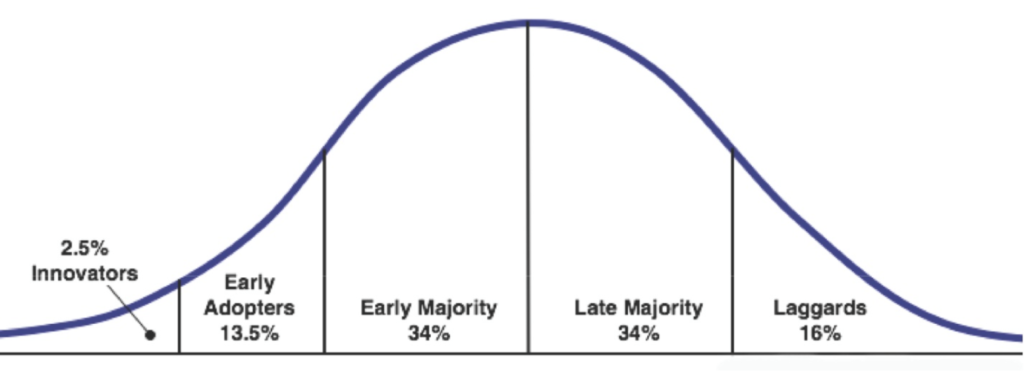
In the beginning, innovators are the first to get interested in new products and novelties. They even accept incomplete or defective products just for the pleasure of being the first ones to use this new product. In second place we find the early adopters, also known as visionaries or enthusiasts, who accept the risks of testing a new product, not for the pleasure of coming first but because they see the potential in it. Usually, they are influencers within organizations and communities in which they participate.
The early majority also called pragmatics, buy new products only after they got references. The late majority are the conservatives, in other words, those who buy only after the price has dropped substantially. Lastly, we have the laggards, who only buy a new product if it is the only option available.
By calculating the integration (who remembers the calculus classes?) we can obtain the famous S-curve regarding technology adoption.
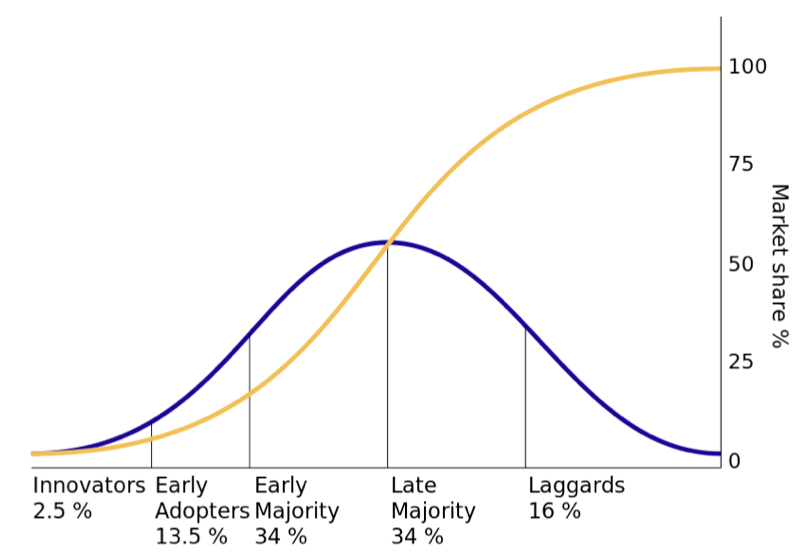
This S-curve can be broken into three stages: the slow beginning, which is the innovation stage; later comes the growth stage, when the early majority and late majority adopt the product; and, lastly, the maturity stage, in which the product has already conquered practically the whole market.
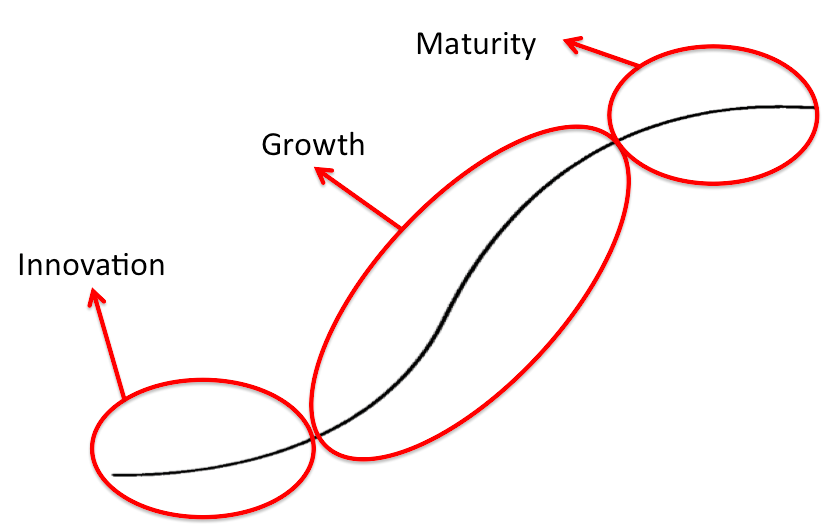
Check out some examples of the S-curve.
S-curve in real life
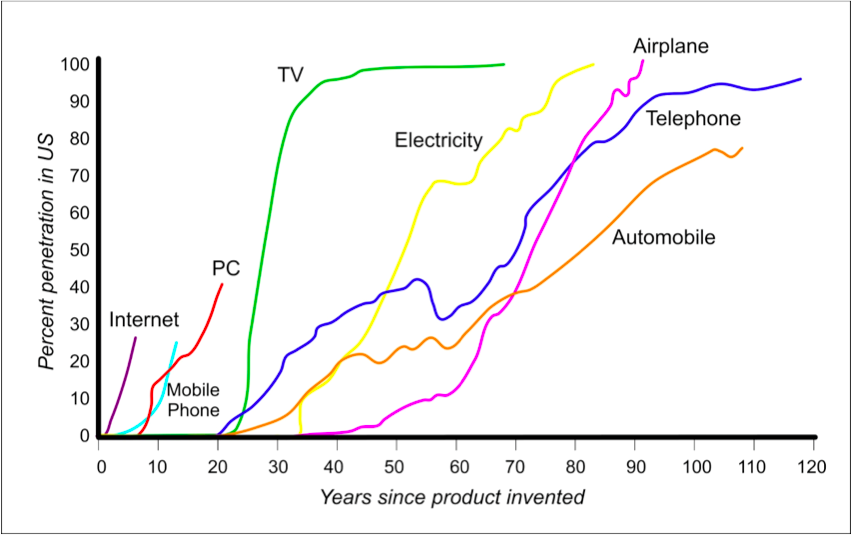
It is not always so perfect as the theoretical curve, but close enough. The TV curve is the closest one and explains why the television manufacturers are always inventing something new, and then selling it to us.
In the first place, there were black and white TVs; then, the colored ones. Then, there were the ones with remote control, flat screen, plasma screen, LCD, LED, 3D and SmartTV. All that, so manufacturers could keep getting revenue out of their clients, even after the TV market has matured about 30 years after it had been invented.
The internet and cell phones curves seem to grow the same way. The curves from PC, electricity, airplanes, telephone, and cars have some alterations in their designs but, in general, they are very similar to the theoretical S-curve.
Another example of the S-curve, closer to who is involved with software development, is the curve regarding the amount of .br domains registered.
.br domains registered
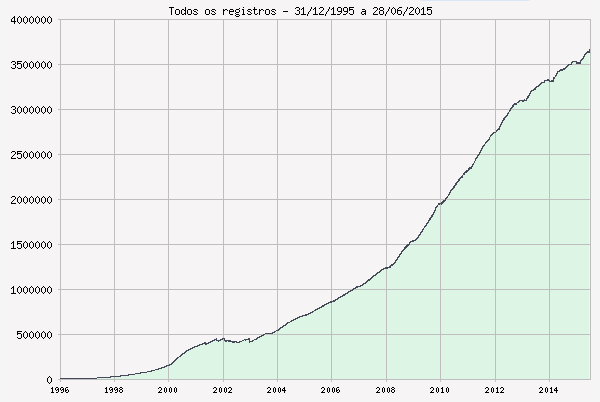
Notice the typical acceleration in the innovation stage that happened between 1996 and 2008. From this year on, we’ve entered into the growth stage. It seems that, from 2013 on, a new deceleration has been taking place. In 2017 it seems we’ve entered into the maturity phase. People and businesses seem to not be registering domains anymore since there are other ways to be present on the internet (market places, Facebook, Instagram, etc.).
However, due to COVID-19 pandemic, the business digitalization re-accelerated, as we can see in the chart below:
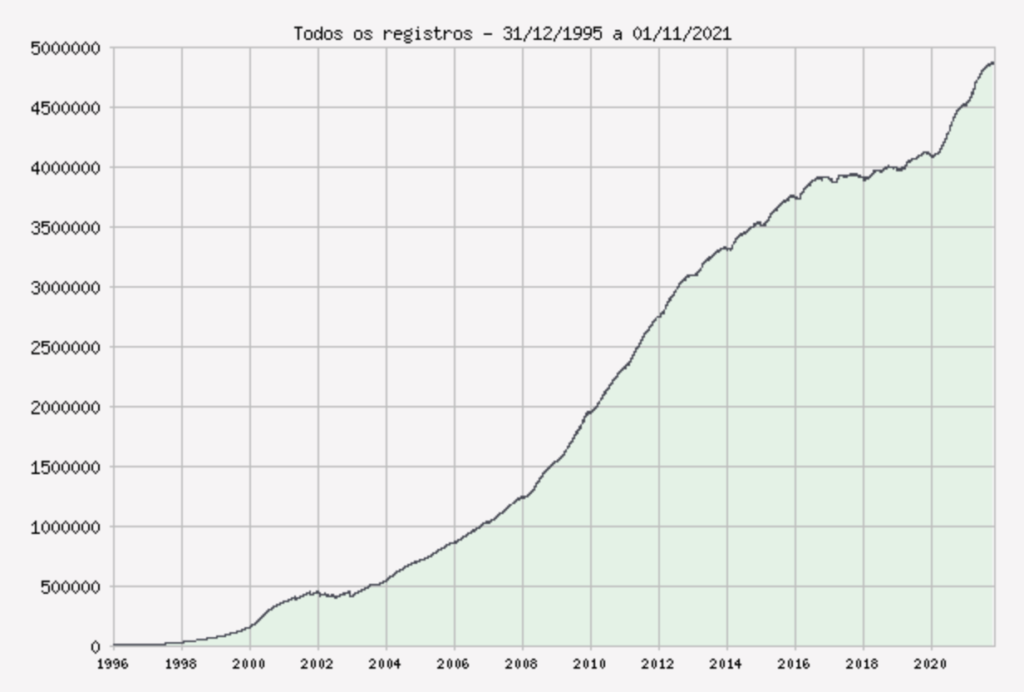
The chasm
There is always a but. In 1991, Geoffrey Moore wrote a book called Crossing the Chasm: Marketing and Selling High-Tech Products to Mainstream Customers.
In his book, Moore explains that among the early adopters (enthusiasts) and the early majority (pragmatics) there is a chasm that many products can’t cross. This happens because the pragmatics need good references for buying a new product and the enthusiasts usually are not the best reference. Hence the difficulty of some products for crossing this chasm.
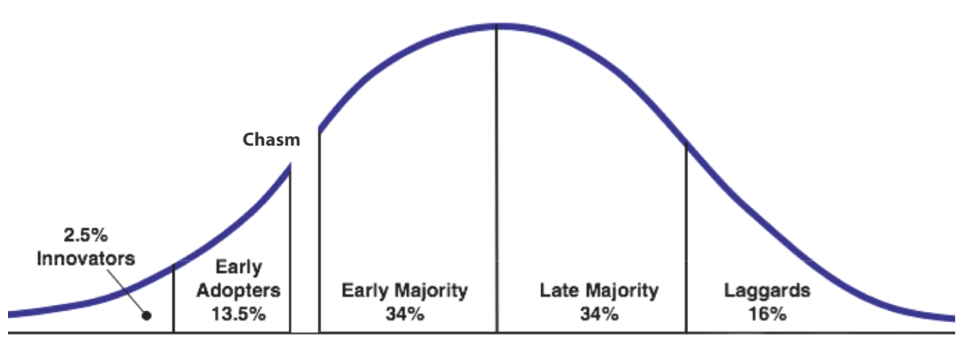
In his book, Moore also presents strategies to cross this chasm but, unfortunately, the strategies proposed are all based on war tactics that, as said in the previous chapter, I don’t think make much sense for the business world.
The proposed strategy, except for the war reference, is summed up in focus. In other words, try to focus in one single type of client and solve their problem with your product. When these clients are very satisfied, then it’s the moment for you to seek new types.
The chasm described by Moore shows one out of two ways possible for the software product:
- It is not going to cross the chasm: the company can’t get its product to go beyond the enthusiasts and, consequently, will not have clients to guarantee its survival. This is one of the reasons that many startups close their doors prematurely.
- Mature: your product is going to work and the company will eventually reach the top of the S-curve, and will decelerate until some other company comes up with a product to replace yours. Take a look at Kodak that, until today, hasn’t recovered from the invention of digital cameras, for its revenue came primarily from the sales of camera films and photographic material.
And here we are in the fourth stage of the software product lifecycle: the end, or, in nicer terms, sunset.
So, we have the four stages in the software product lifecycle: innovation, growth, maturity, and sunset.
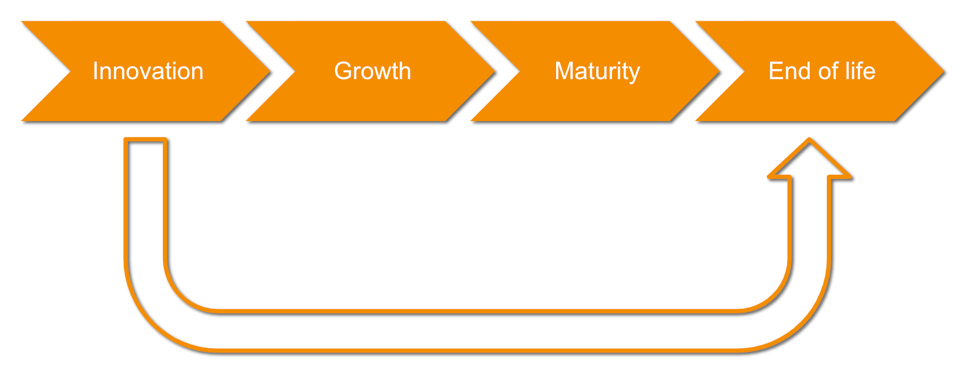
Now we’ll see each one of these stages with more details and understand the role of product management in each one of them.
Digital Product Management Books
Do you work with digital products? Do you want to know more about how to manage a digital product to increase its chances of success, solve its user’s problems and achieve the company objectives? Check out my Digital Product Management bundle with my 3 books where I share what I learned during my almost 30 years of experience in creating and managing digital products:
- Startup Guide: How startups and established companies can create profitable digital products
- Product Management: How to increase the chances of success of your digital product
- Leading Product Development: The art and science of managing product teams
You can also acquire the books individually, by clicking in their titles above.

